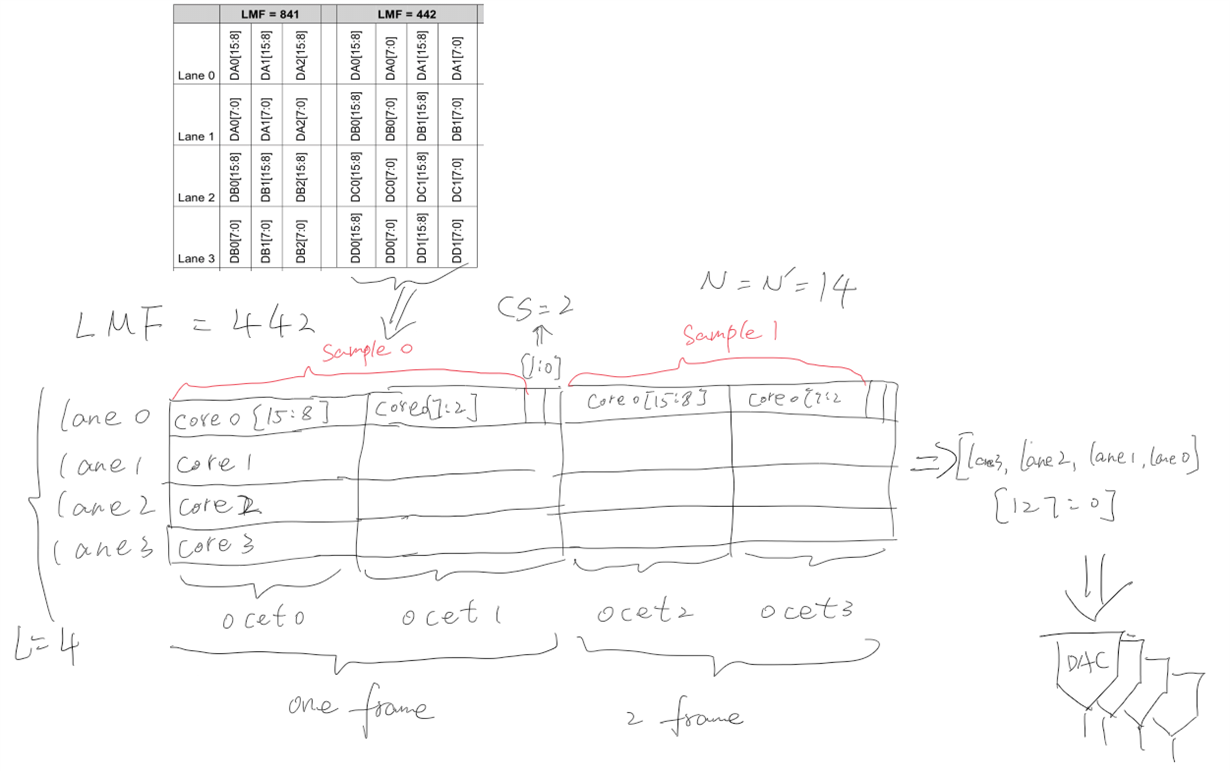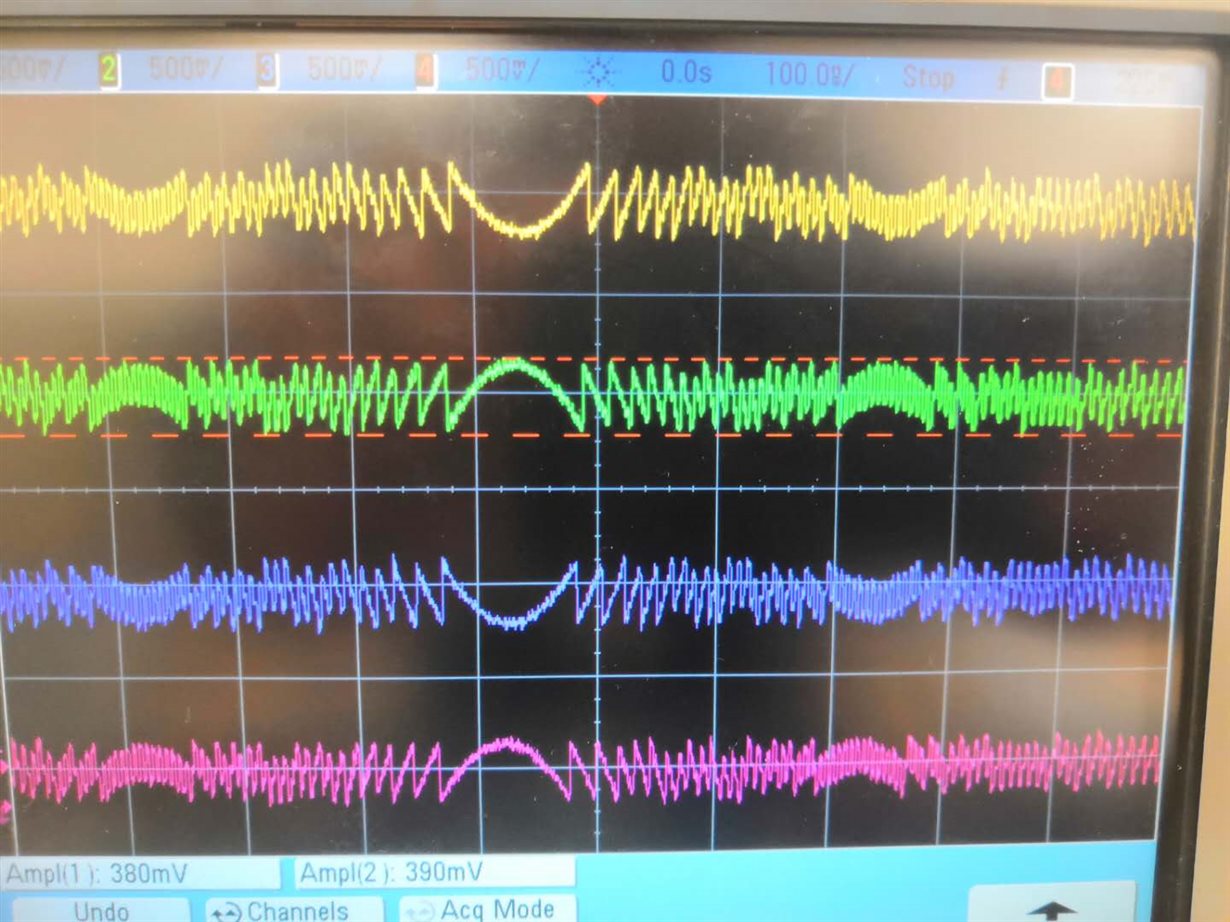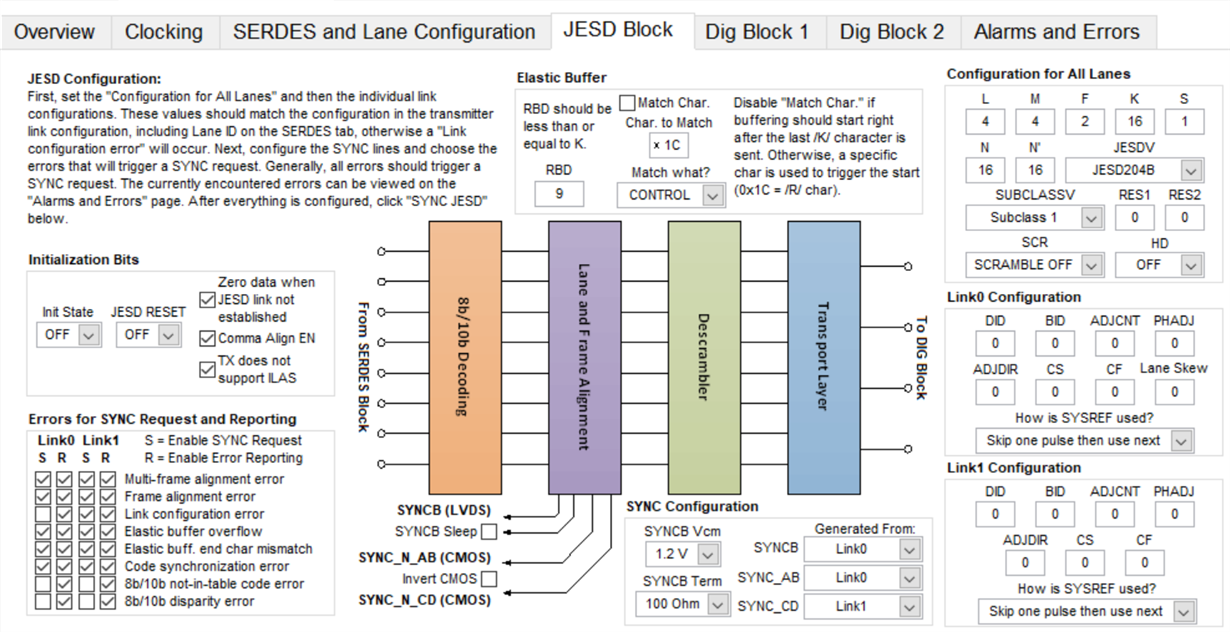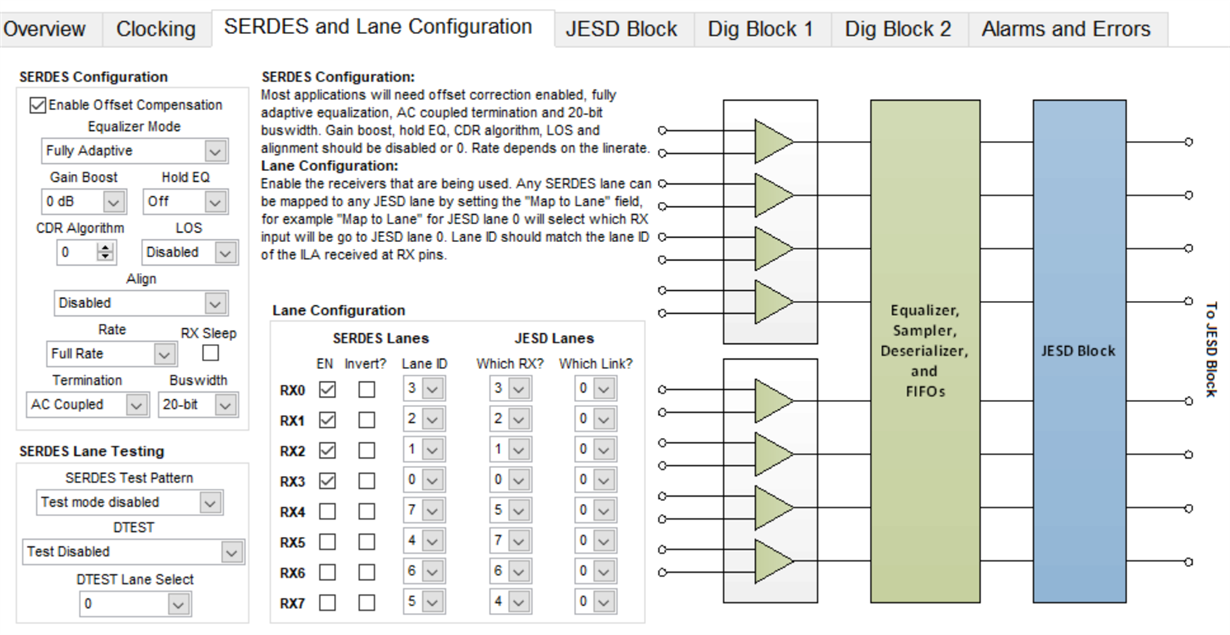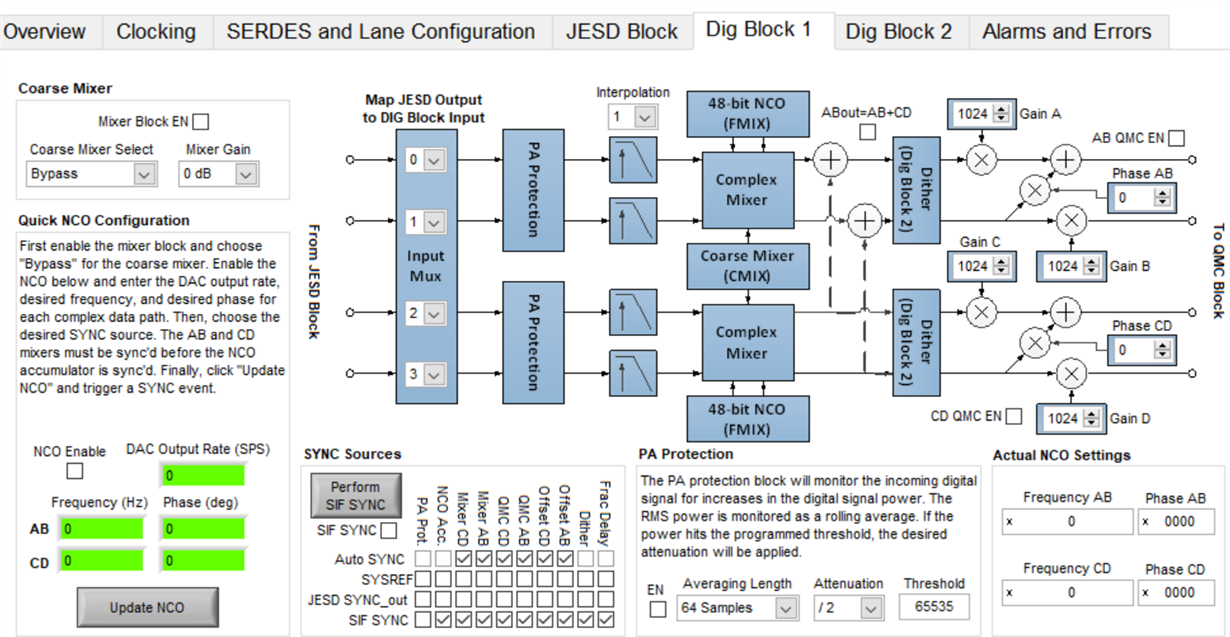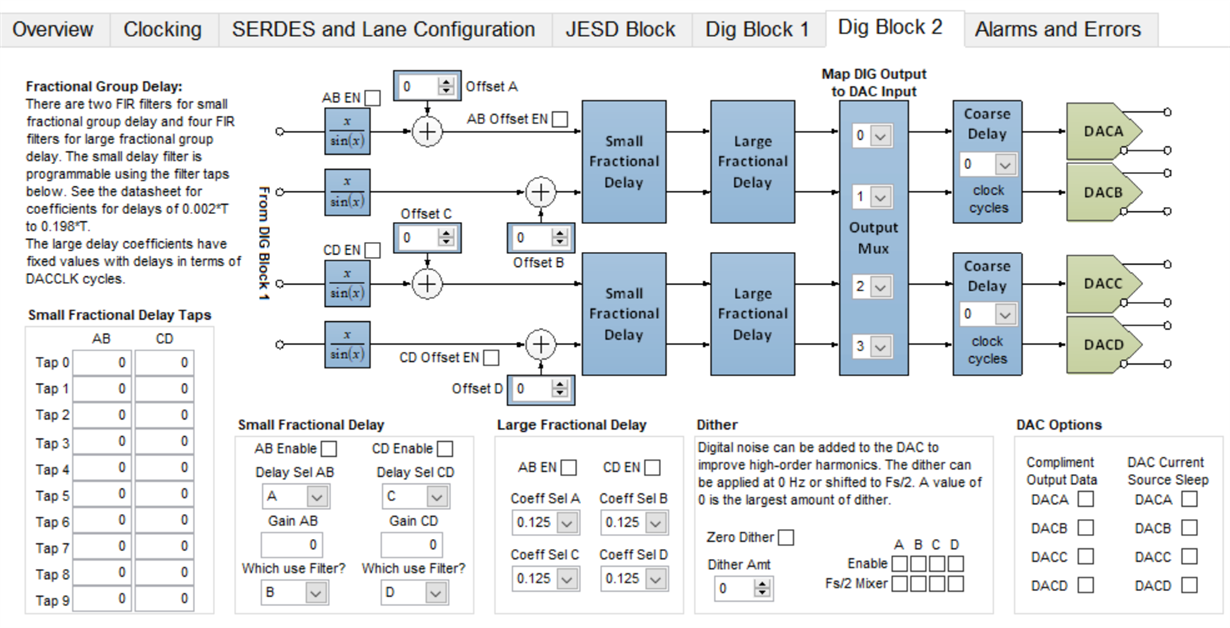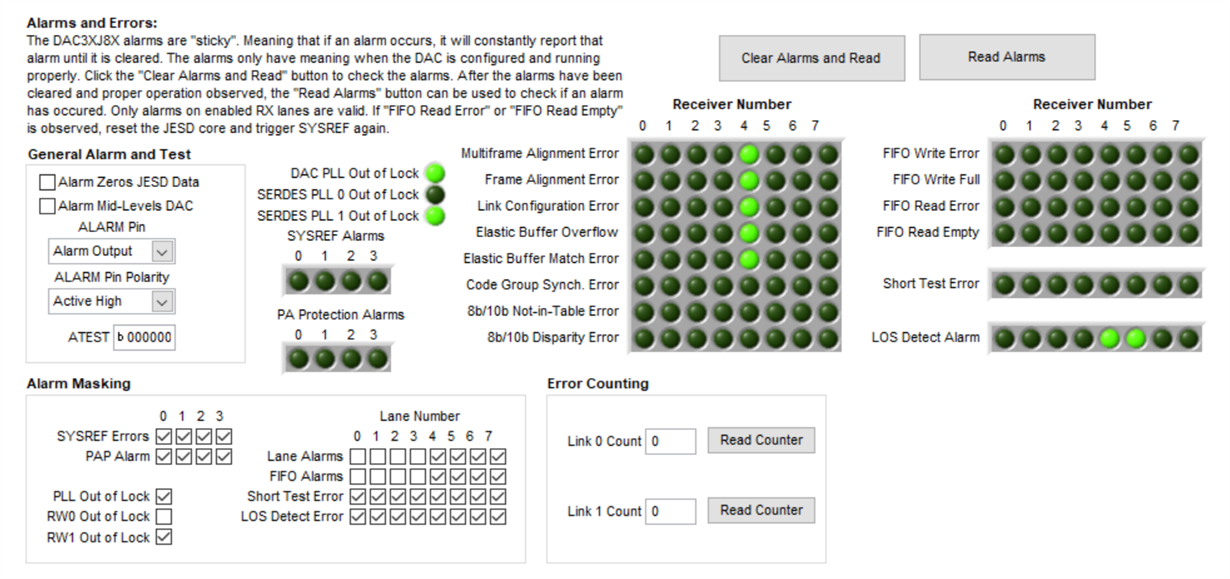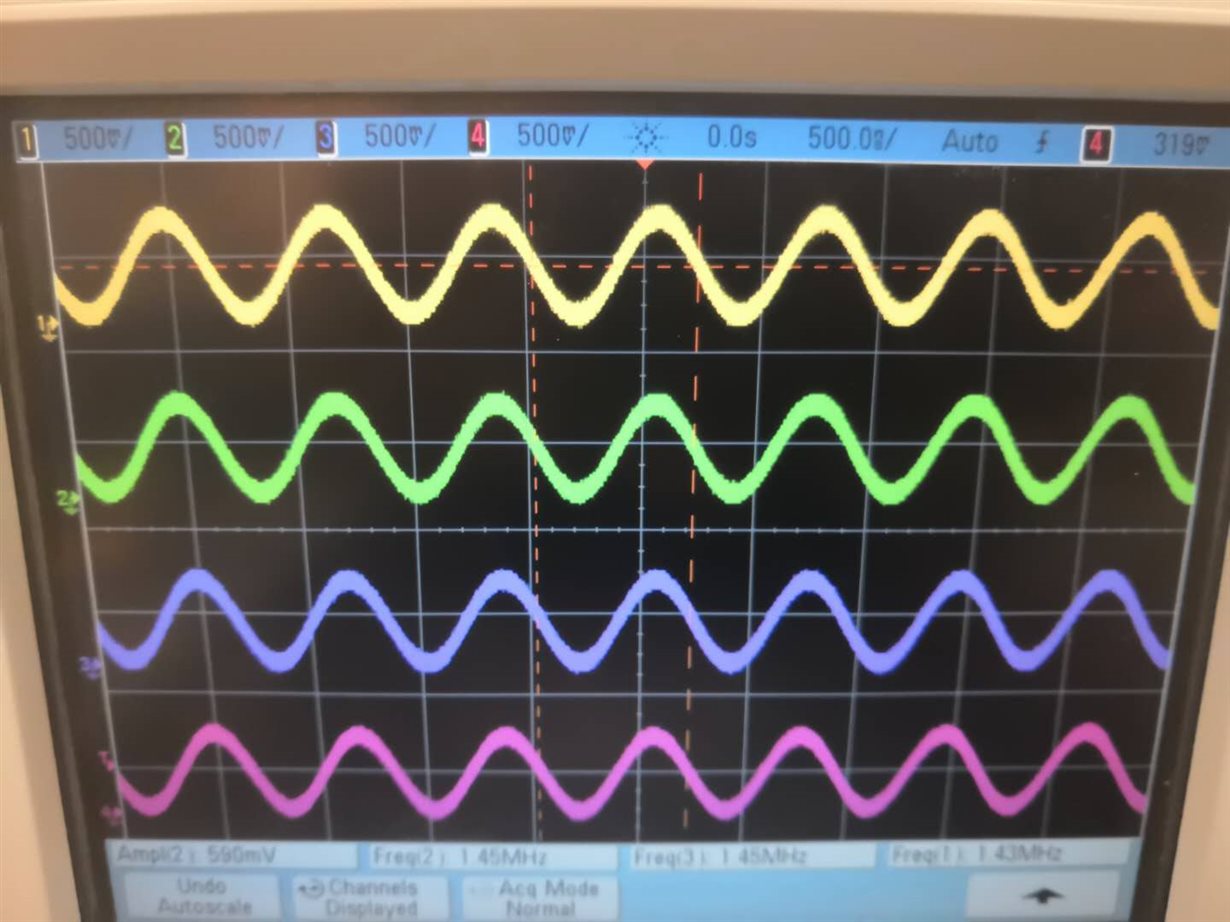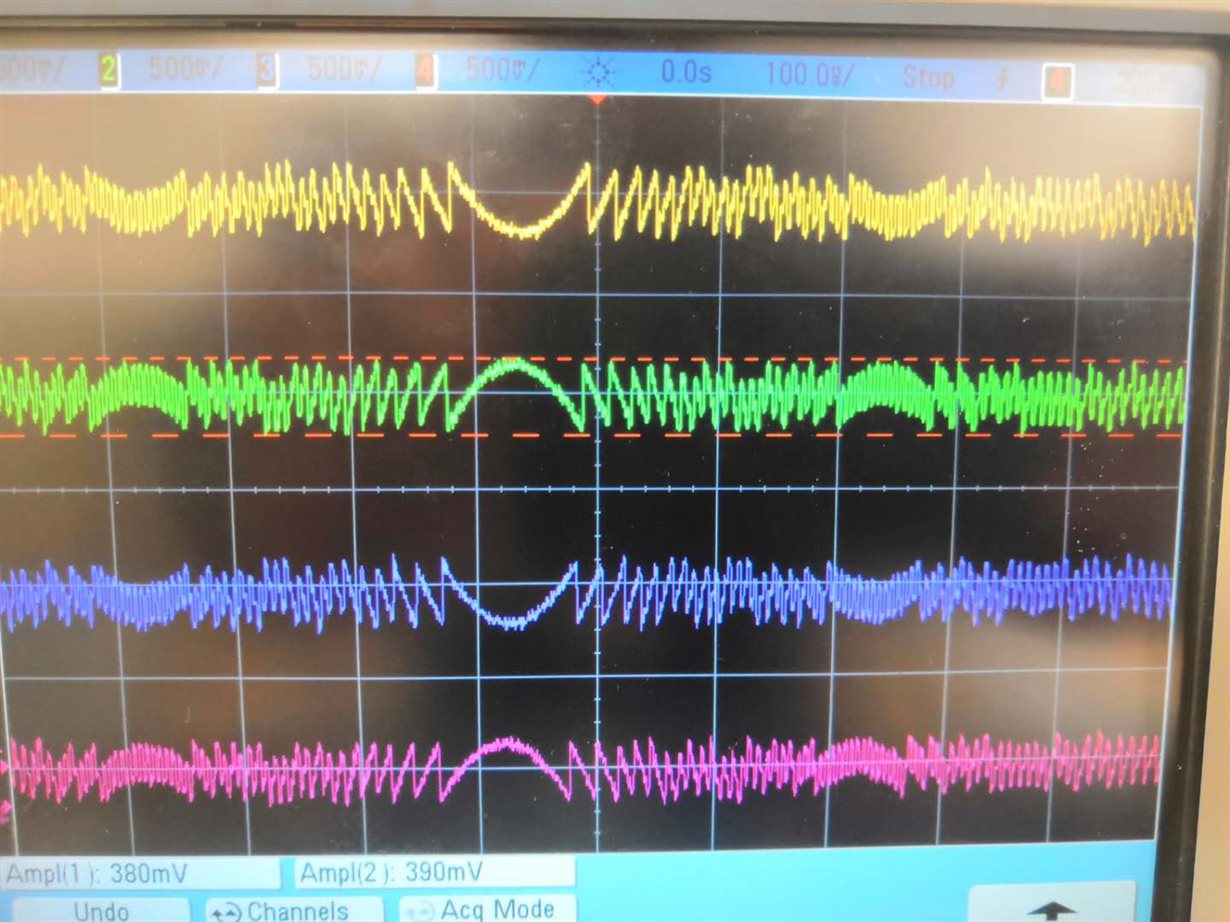Other Parts Discussed in Thread: DAC39J84
Hi,
I am using Xilinx FPGA KC705 to do DSP and transmit the processed signal together with I,Q signal by DAC39J84.
In the first stage, I plan to interface FPGA with DAC in JESD204 standard to transmit a sine wave.
So far the link sync is achieved. But I received distorted signals from the DAC even though I matched all the configuration parameters.
LMFS =4221 K=16 I set these in DAC GUI
And I wrote the corresponding register values to JESD core in FPGA
Addr x008
Data x0000_0001 Enable Lane Alignment
Addr x00C
Data x0000_0000 [0] Disable Scrambling
Addr x020
Data x0000_0001 F (octets per frame) = 2
Addr x024
Data x0000_000F K (Frames per multi) = 16
Addr x014 Tx Only
Data x0000_0003 [7:0] ILA multiframes = 4
Addr x814 Tx Only
Data x000_0100 [12:8] s=1
Addr x810 ILA config 4
Data x0010_1004 [20:16] N'=16 [12:8] N=16 [7:0] M=4
Could anyone give me some suggestion about what could be the potential problems ?
Thanks for any help.




